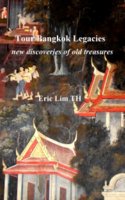| Back to Back Issues Page |
 |
|
Bangkok Travelbug June 15 Old temples in Phetchaburi May 27, 2015 |
| Hello
Brief history of Phetchaburi province The Khmer Empire (9th – 15th C) was an extensive empire based in Angkor Wat in present-day Cambodia. In the reign of King Jayavarman VII (12th – 13th C) the greatest king, the empire reached the height of its glory. 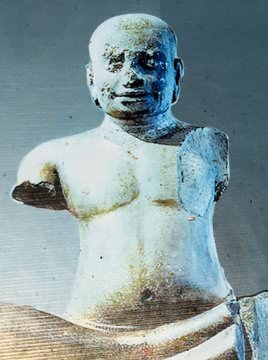
Statue of King Jayavarman VII taken from a picture in Wat Kamphaeng Laeng The Khmers were great builders and constructed roads, reservoirs, bridges, hospitals and sanctuaries that spread the influence of the empire far and wide. Its territories covered many parts of north-eastern and central Thailand. This outer fringe of the empire included the Korat plateau and the Chao Phraya basin, Lopburi and Suphanburi, Ratchaburi and Kanchanaburi and even as far south as Phetchaburi. Some Khmer ruins can be found in Phetchaburi. With the decline of the Khmer empire in the 13th C, the old town of Phetchaburi became a vassal of Sukhothai and later in the 14th AD, a principality of Ayutthaya. Phetchaburi unfortunately was in the path of the southern invasion route of the Burmese who passed through in 1767 for the attack on Ayutthaya and again in 1785 in the reign of King Rama I. Traces of the destruction have been preserved till today. Table of contents Wat Ko Kaeo Suttharam Wat Ko Kaeo Suttharam was built during the Ayutthaya period (14th – 18th C). Typical of the architecture of that period the ubosot (ordination hall) has no windows, only doors to the north and south. There are some beautiful murals in the ubosot on the life of Buddha and places he visited after Enlightenment. 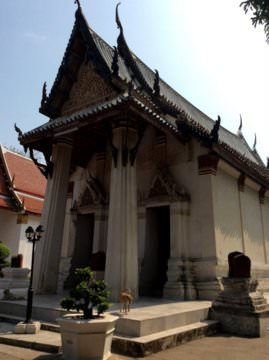
Ubosot or ordination hall An inscription on the murals indicates that they were painted in 1734. The features of these murals are similar to those in Wat Yai Suwanaram which we will be visiting later. 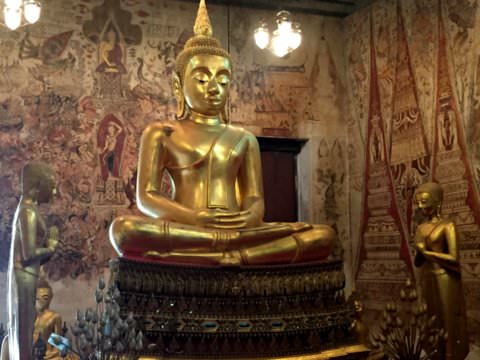
Inside the ubosot These murals of the Ayutthaya era have been authenticated by the Fine Arts Department and are considered a national treasure. A monk opened the ubosot for us and also handed me a book on the history and details of the temple for which I’m grateful. 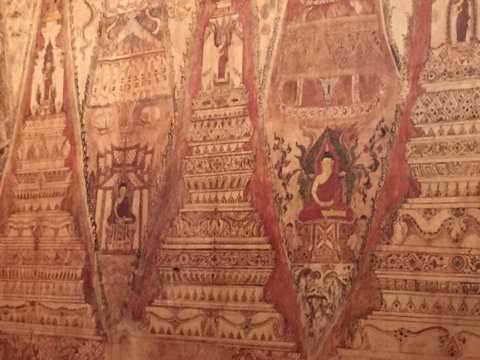
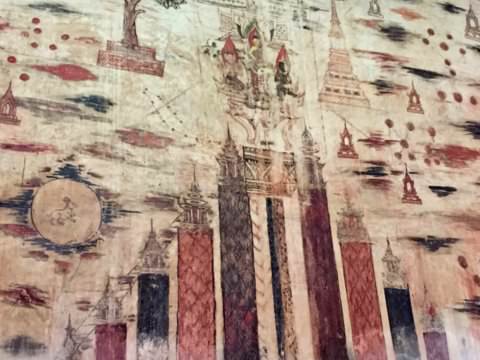
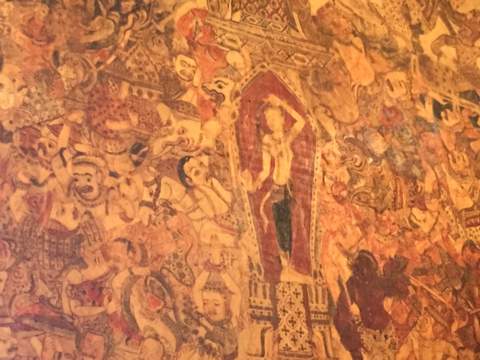
Please turn off your flash when using the camera in the ubosot and remove your footwear before entering the ubosot. Before leaving, stop by the sala (pavilion) by the Phetchaburi River for some beautiful scenery and where you can really be at peace with nature. 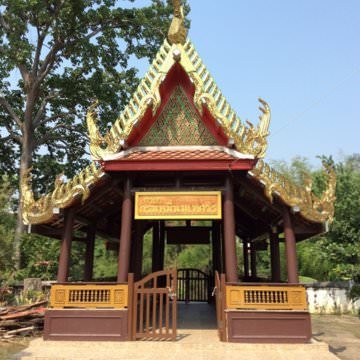
The sala 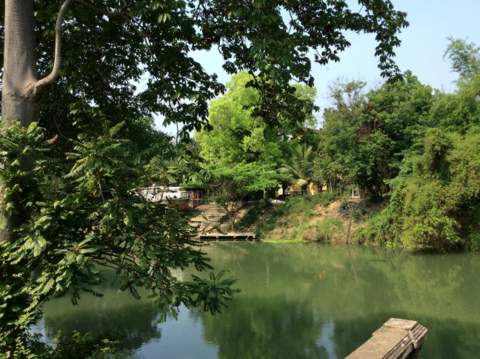
Phetchaburi River Table of contents Wat Kamphaeng Laeng This was an unexpected and a surprise find, a real gem! While getting around the one-way streets in Phetchaburi city to our next destination, we noticed the ruins of these old walls that looked very interesting. 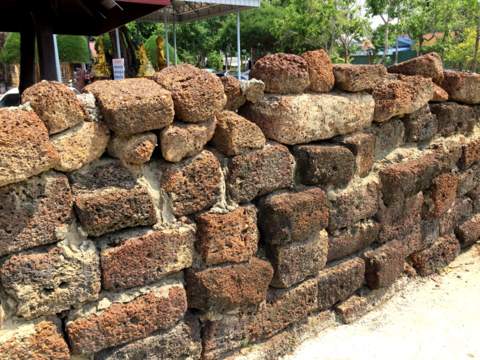
Old walls We decided to stop to take a look and found the ruins of this shrine in the grounds of Wat Kamphaeng Laeng. According to the information boards, this shrine was constructed in 1191. 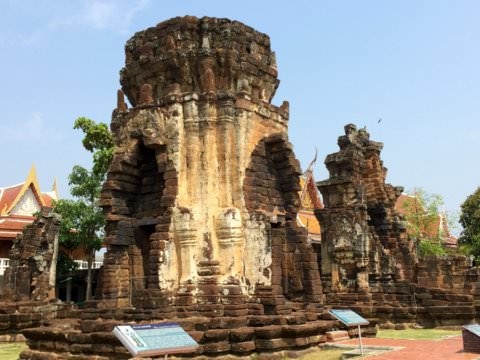
Ruins of the old shrine, the modern temple buildings are in the background Wat Kamphaeng Lang has the biggest and oldest ancient ruins in Phetchaburi, designed in the Bayon style during the Angkor period (1180 – 1230). The Bayon Temple is at the heart of Angkor Thom, the royal city by King Jayavarman VII (1181 – 12?*). These ruins have been verified to be genuine from the architectural design and relics found. All that’s left are the remains of a main shrine in the centre with shrines in the four cardinal directions and parts of an old wall. Each of the shrines is dedicated to a specific deity. 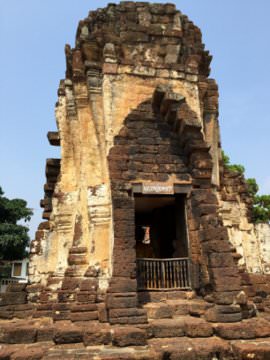
The main shrine 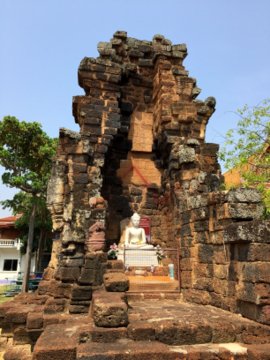
Northern shrine 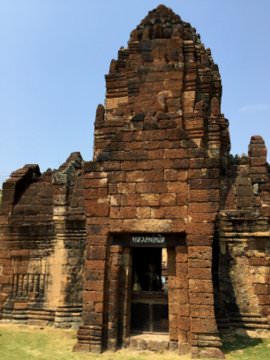
Eastern shrine After the death of King Jayavarman VII around 1220*, the Khmer Empire went into decline and like all great empires in the past, soon disintegrated. The shrines at Wat Kamphaeng Laeng were abandoned until their discovery and excavation by Fine Arts Department in 1987. The present Wat Kamphaeng Lang was constructed in 1954. *Historians are unsure as to the exact year in which King Jayavarman VII died. Table of contents Wat Yai Suwannaram Wat Yai Suwannaram is another Ayutthaya period temple but there are no records as to when exactly it was built. In the reign of Ayutthaya’s King Jao Sua (1703 – 1709) the temple was restored by the Supreme Patriarch Phra Suwanmunee. It’s called Wat Yai as it occupies 20 rai of land (32 hectares or 8 acres) of land. In 1909 Wat Yai Suwannaram acquired the status of a third class royal temple of the Worawihan grade (second grade). The two main structures of interest in Wat Yai Suwannaram are the sala kan prian (multi-purpose hall) and the ubosot (ordination hall) The sala kan prian is made completely of teak and the roof is made from fibrous banana tree trunks. The gable is lined with tiles studded with coloured glass. 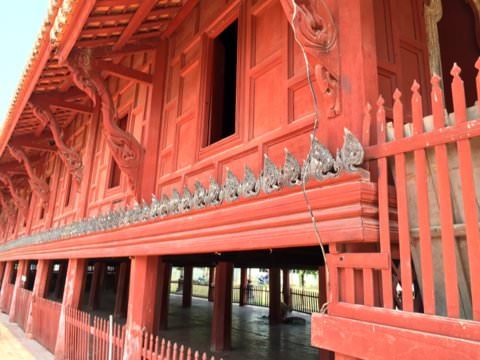
The sala kanprian in teak Huge octagonal wooden pillars etched with gold designs (lai rod nam) hold up the floor boards and roof. These designs are in pairs and no two pairs are repeated. 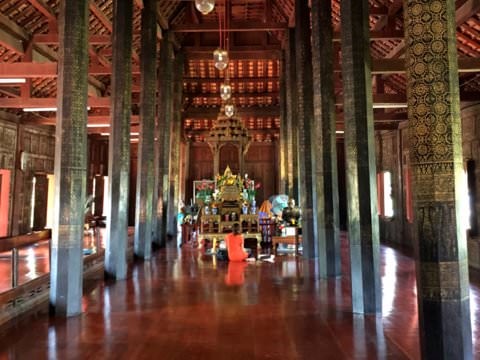
Inside the sala kanprian The paintings on the wall and windows of the sala kan prian are painted in a special form of Thai art called lai nam kao. Of particular interest in the sala kan prian is this teak door lined with gold designs. According to records the cut at the top of the door on the right was left by Burmese sword. 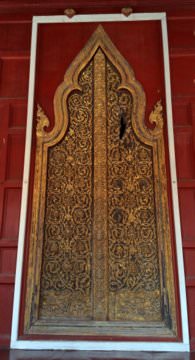
Door in the sala kanprian The ubosot is walled in and the inner walls are lined with Buddha statues. The murals in the ubosot are about 400 years old but are badly faded and in need of restoration. 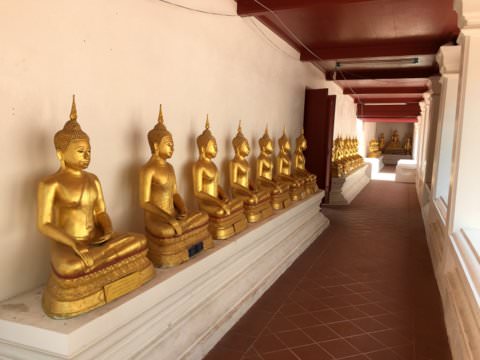
Buddha images along the cloisters 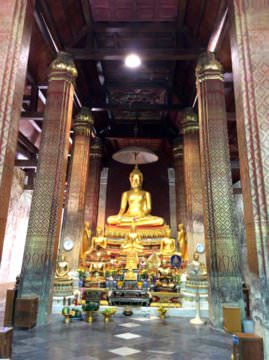
Inside the ubosot 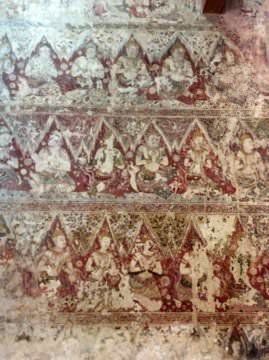
Murals in the ubosot Wat Yai Suwannaram was featured in some scenes in the 2001 movie "The Legend of Suriyothai", the story of a 16th C queen in Ayutthaya who sacrificed her life to defend her king in battle with the Burmese. 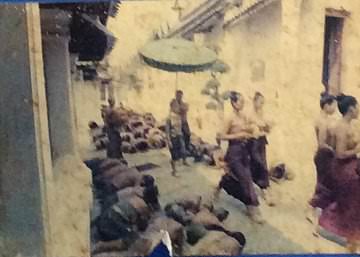
Within the walls around the ubosot 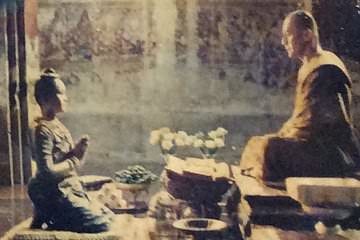
In the ubosot – note the faded murals Table of contents Wat Mahathat Worawihan Wat Mahathat Worawihan was built in the Sukhothai period (13th – 14th C). The temple has an impressive landmark, a five prang structure in dazzling white that can be seen from afar. The structure consists of a central prang that’s the biggest which is surrounded by four smaller prangs. The prangs are walled in and the inner wall is lined with Buddha images as well. 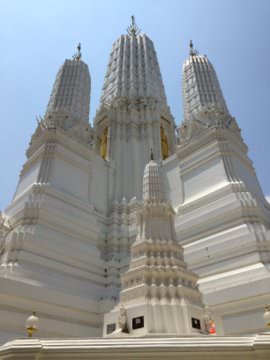
Five prangs The ubosot or ordination hall has several Buddha images was the centre of activity with many visitors on a Sunday. 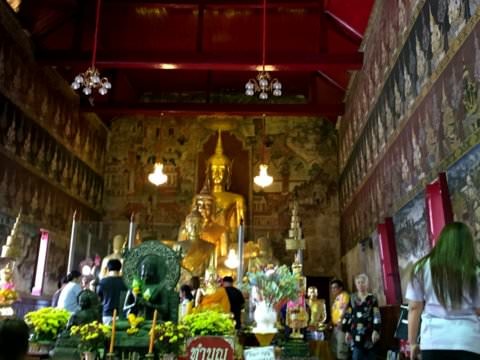
Inside the ubosot It was a pleasant surprise to find these murals on the walls. The beautiful mural on the back wall, though faded, is particularly impressive. 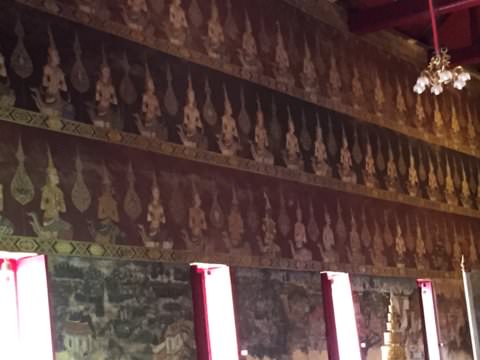
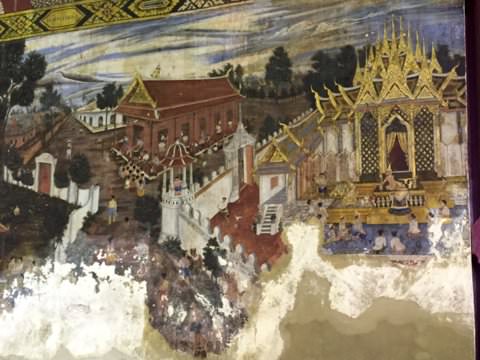
The elaborate arches over doors of the ubosot are another attraction in Wat Mahathat. 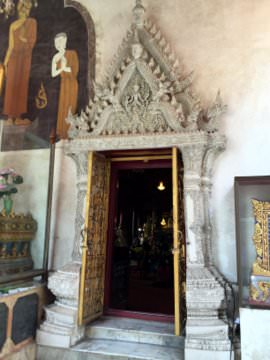
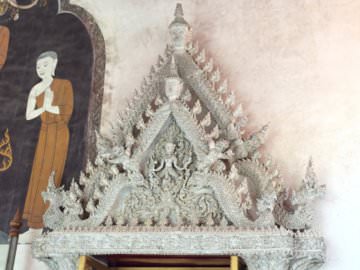
In this tour of old temples in Phetchaburi, we’ve covered temples in the 18th C Ayutthaya period, 14th C Sukhothai period and the ruins of a 12th C Khmer shrine, remnants of long-gone kingdoms and empires. Table of contents Map of old temples in Phetchaburi If the map doesn’t appear click on this link How to get to Phetchaburi city Start your journey from Bangkok, cross over to the west bank of the Chao Phraya and get onto Rama II Road. Proceed on this road till you get to highway 35 which passes Samut Sakhon, Samut Songkhram. Then switch to highway 4 and keep going south till you get to Phetchaburi city. Sequence of visits Once you get to Phetchaburi city, we suggest you start your tour from the south of the city and take the suggested route to visit these temples in the following sequence. This is because some of the roads are one-way and you’ll end up going around in circles.
Opening hours The temples are open between 8:00 am – 5:00 pm. Table of contents
If you enjoyed reading this e-zine, please forward it to a friend. If you received this from a friend and found it interesting, please subscribe at Bangkok Travelbug. What do you think of the Bangkok Travelbug? We love to hear from you What other subscribers have said Till next month then. Eric Lim Tour Bangkok Legacies Find us on Facebook Copyright@2008-2015 Tour Bangkok Legacies All rights reserved |
| Back to Back Issues Page |
